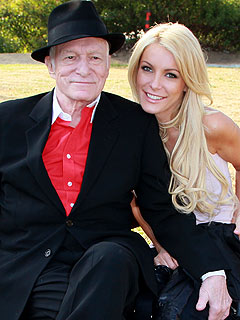WASHINGTON — President Obama said Tuesday that the United States would formally recognize a coalition of Syrian opposition groups as that country’s legitimate representative, in an attempt to intensify the pressure on President Bashar al-Assad to give up his nearly two-year bloody struggle to stay in power.
Manu Brabo/Associated Press
Opposition fighters looked at a Syrian Army jet on Tuesday.
Mr. Obama’s announcement, in an interview with Barbara Walters of ABC News on the eve of a meeting in Morocco of the Syrian opposition leaders and their supporters, was widely expected.
But it marks a new phase of American engagement in a bitter conflict that has claimed at least 40,000 lives, threatened to destabilize the broader Middle East and defied all outside attempts to end it. The United States had for much of the civil war largely sat on the sidelines, only recently moving more energetically as it appeared the opposition fighters were beginning to gain momentum — and radical Islamists were playing a growing role.
Experts and many Syrians, including rebels, say the move may well be too little, too late. They note that it is not at all clear if this group will be able to coalesce into a viable leadership, if it has any influence over the fighters waging war with the government or if it can roll back widespread anger at the United States.
“The recognition is designed as a political shot in the arm for the opposition,” said Andrew J. Tabler, a senior fellow and Syrian expert at the Washington Institute for Near East Policy. “But it’s happening in the context of resentment among the Syrian opposition, especially armed elements, of the White House’s lack of assistance during the Syrian people’s hour of need. This is especially true among armed groups.”
The announcement puts Washington’s political imprimatur on a once-disparate band of opposition groups, which have begun to coalesce under pressure from the United States and its allies, to develop what American officials say is a credible transitional plan to govern Syria if Mr. Assad is forced out.
Moreover, it draws an even sharper line between those elements of the opposition that the United States champions and those it rejects. The Obama administration coupled its recognition with the designation hours earlier of a militant Syrian rebel group, the Nusra Front, as a foreign terrorist organization, affiliated with Al Qaeda.
“Not everybody who is participating on the ground in fighting Assad are people that we are comfortable with,” Mr. Obama said in an interview on the ABC program “20/20.” “There are some who I think have adopted an extremist agenda, an anti-U.S. agenda.”
But Mr. Obama praised the opposition, known formally as the National Coalition of Syrian Revolutionary and Opposition Forces, for what he said was its inclusiveness, its openness to various ethnic and religious groups, and its ties to local councils involved in the fighting against Mr. Assad’s security forces.
“At this point we have a well-organized-enough coalition — opposition coalition that is representative — that we can recognize them as the legitimate representative of Syrian people,” he said.
The United States is not the first to make this step. Britain, France, Turkey and the Gulf Cooperation Council have also recognized the Syrian opposition group. But experts note that the support has done nothing to change the military equation inside Syria, where Mr. Assad has stubbornly clung to power despite gains by rebel fighters. Mr. Assad continues to rely on air power and artillery to pummel rebel positions even as fighting has spread into his stronghold of Damascus.
Mr. Obama notably did not commit himself to providing arms to the rebels or to supporting them militarily with airstrikes or the establishment of a no-fly zone, a stance that has led to a rise of anti-American sentiment among many of the rebels.
That is the kind of half-step that has led to mounting frustration in Syria, peaking this week with the blacklisting of the Nusra Front. Far from isolating the group, interviews with Syrian rebels and activists show, it has for now appeared to do the opposite. It has united a broad spectrum of the opposition — from Islamist fighters to liberal and nonviolent activists who fervently oppose them — in anger and exasperation with the United States.
The United States has played an active role behind the scenes in shaping the opposition, insisting that it be broadened and made more inclusive. But until Mr. Obama’s announcement, the United States had held off on formally recognizing the opposition, asserting that it wanted to use the lure of recognition to encourage the rebel leaders to flesh out their political structure and fill important posts.












